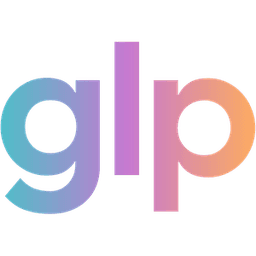What to Expect in GLP-1 Therapies for 2026
Author
glp winnerDate Published
- Twitter
- Facebook
- LinkedIn
- Instagram
- Copy Link

Welcome — we’re heading into a game-changing year for GLP-1 (“glucagon-like peptide-1”) therapies. If you’re tracking what’s next in obesity and metabolic health, 2026 is the year where format shifts, mechanism upgrades, and access battles all converge. I’ll walk you through the major expected developments, what they mean, and how to keep ahead.
1. The Big Potential Launch: Oral GLP-1s
One of the most anticipated moves: the first true oral GLP-1 for obesity. Orforglipron from Eli Lilly and Company is targeting a March 2026 U.S. approval date (Reuters).
Why this matters: switching from injections to a pill could lower the barrier for many, improve adherence, and reshape how GLP-1s are prescribed and used.
Heads-up: even if approved, supply, cost, and payer coverage may still pose early-stage challenges. It’s unclear if pill form GLP-1s offer the same benefits for everyone, so an injected version could still be a better fit for your needs (always work with a provider to best understand).
2. Next-Gen Molecules Hitting Submissions or Data in 2026
CagriSema (combo of semaglutide + cagrilintide) from Novo Nordisk plans a regulatory submission in Q1 2026.
Retatrutide (a triple-agonist: GLP-1/GIP/glucagon) has late-stage trials finishing in 2026 — if all goes well, this could raise the bar for weight-loss rates and would bring a new option to the pharmacy for those who need it.
Other pipelines: Amycretin launches Phase 3 in early 2026, while Survodutide keeps its trajectory toward 2027/28. These aren’t launched in 2026 but will dominate headlines and inform expectation (Biospace, Fierce, Lancet) .
3. Access & Coverage: The Hidden Story
If you’re wondering why some people can get GLP-1 medications covered while others can’t, you’re not alone. U.S. federal coverage (like Medicare) currently allows these drugs for diabetes or a few related health conditions — but not for weight-loss alone in most cases.
There’s also a new policy deal in the works that could open the door for broader coverage in 2026, but details are still being finalized and may take time to roll out.
Meanwhile, many employers and insurance plans are feeling the financial pressure of these popular medications. In 2026, expect to see more prior authorizations, tighter eligibility rules, and programs that tie coverage to results — often called “value-based” plans.
Bottom line: even as new GLP-1 drugs reach the market, insurance access might not move as fast as innovation does. Staying informed and checking your benefits regularly will help you know when coverage rules start to shift.
4. Mechanism Trends – Beyond GLP-1 Alone
The next wave of research isn’t just about stronger doses — it’s about smarter combinations. Scientists are pairing hormones in new ways, like GLP-1 + amylin or GLP-1/GIP/glucagon “triple agonists”. These multi-hormone therapies could help people lose more weight and improve metabolic health, but they may also bring new considerations around side effects, tolerability, and long-term cost.
There’s also a big shift toward oral options instead of injections. If orforglipron wins approval, it could change how people start treatment — turning a weekly shot into a daily pill and making GLP-1s feel more like a routine medication than a specialty drug.
Finally, researchers are looking beyond weight loss. GLP-1s are being studied in conditions like fatty-liver disease (MASH), osteoarthritis, and even Alzheimer’s risk. These studies could expand how payers and doctors view the “value” of GLP-1 drugs, even if official labels don’t change in 2026.
In short: 2026 will be less about brand-new drugs hitting shelves, and more about understanding how far this class of medications can go — inside and outside the weight-management space.
5. What It Means for Patients & Payers
If you’re thinking about starting or continuing a GLP-1 in 2026, here’s what this all means for you.
For patients, it’s worth paying attention to how these medications are taken — some will still be weekly injections, while others (like orforglipron) may come as daily pills. Cost and coverage will also depend on why you’re prescribed a GLP-1 — most plans still cover it for diabetes or related conditions first, with weight-loss use catching up slowly. Keeping up with benefit changes and talking with your provider before refills can help you avoid surprises.
For employers and insurance plans, 2026 will be a year of balancing demand and cost. Expect new coverage rules, prior authorizations, and “value-based” programs that tie payment to patient results (Fierce Healthcare). If you manage benefits, now’s the time to plan how these policies will affect members and budgets.
For clinicians, staying current on Phase 3 results and new FDA filings will be key. Patients will have more questions than ever — and being ready with evidence-based guidance can help them choose safe, sustainable options.
The takeaway: 2026 won’t just bring new GLP-1 drugs — it’ll bring new choices, new rules, and new conversations. The more you understand how these pieces fit together, the better prepared you’ll be to make confident decisions.
6. What to Watch in 2026 – Quick Check-List
If you want to stay ahead of the next wave of GLP-1 changes, here’s where to keep your eye. Each of these milestones could shape what treatments are available — and what they’ll cost — over the next year.
Did the FDA approve orforglipron, and under what label and cost?
→ If yes, expect the first true oral GLP-1 to enter the market, potentially changing how many people start treatment.
Did CagriSema file or receive priority review, and what new weight-loss or side-effect data emerged?
→ These results will hint at whether dual-hormone therapies can outperform today’s single-pathway drugs.
What’s the progress of retatrutide Phase 3 readouts?
→ These trials test the limits of “how much weight loss is possible” — and may forecast the next generation of prescriptions.
Did Medicare or major commercial payers announce new coverage rules for obesity GLP-1s?
→ Coverage decisions will determine who can actually access these drugs, not just who qualifies medically.
How are employer health plans adjusting GLP-1 strategies in 2026 renewals?
→ Watch for new cost-sharing models, step therapy, or outcomes-based programs that may change out-of-pocket costs.
Together, these updates will define what real access looks like in 2026 — not just which drugs make headlines.
7. FAQ
Q: Will the new drugs replace current treatments like Wegovy® or Zepbound®?
A: Not in 2026. Current drugs remain standards of care. New options are additions, not replacements.
Q: Is a compounded GLP-1 option the same as FDA-approved treatments?
A: No. Compounded medications are not FDA-approved and their safety or efficacy has not been established for the same uses.
Q: When can I expect lower-cost coverage of GLP-1s for weight loss?
A: It’s uncertain. Policy moves signal change in 2026, but plan-by-plan differences mean many people may wait longer.
8. Compliance Notes - Why They Matter
It’s easy to get lost in all the headlines about “new GLP-1s,” so here’s what actually matters for you.
Only certain GLP-1 medications are FDA-approved for specific uses — like Wegovy® for weight management and Ozempic® for diabetes. That approval means they’ve been tested for safety, dosing, and long-term results. If a drug isn’t yet approved for your condition, your doctor may still discuss it off-label — but you deserve to know exactly what’s backed by evidence and what’s still being studied.
You may also hear about compounded versions of GLP-1s. These are not FDA-approved drugs, and their safety and effectiveness haven’t been established. Compounding can be medically necessary in some cases (for example, when there’s a shortage), but the quality and consistency can vary from one pharmacy to another — so it’s always worth asking your provider where it’s sourced and whether it’s inspected.
Everything shared here comes from publicly available, verifiable sources — the same ones your doctor, pharmacist, or insurance provider would reference.
Most importantly, nothing in this article is a promise of results or a guarantee of safety — it’s a roadmap to help you have better, more informed conversations with your healthcare team.
If you enjoy posts like these, you can subscribe to receive newsletter updates.
Sources
Keep Reading

Trump’s plan could cut GLP-1 drug prices — like Ozempic® and Wegovy® — to $150/month. Here’s what’s real, what’s pending, and who it helps.

Your GLP-1 medication really can expire. Learn what expiration and beyond-use dates mean, when to discard, and how to keep injections safe.

Find and compare trusted online GLP-1 providers safely. GLP Winner helps you understand options, avoid scams, and connect with real care.
